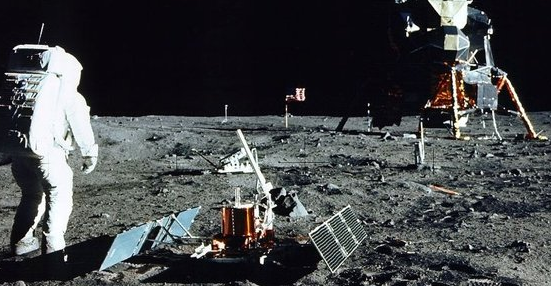GPS on The Moon
On March 3, the Lunar GNSS Receiver Experiment (LuGRE) successfully mapped Earth-based navigation signals on the Moon's surface for the first time, NASA and the Italian Space Agency reached a major milestone. This achievement demonstrates that GNSS (Global Navigation Satellite System) signals can be picked up on the Moon, so offering future Artemis missions and other expedition missions to navigate more precisely and autonomously. The tech is considered a springboard for sophisticated Moon and Mars navigation systems.
LuGRE was among the payloads on the Firefly Aerospace's Blue Ghost lunar lander, which landed on March 2 to get started toward this historical accomplishment. Operations began at the Goddard Space Flight Center of NASA's LuGRE group shortly following touchdown on the moon. They were waiting for findings to determine whether the project could track signals from two GNSS constellations Galileo and GPS.
At 2 am, EST LuGRE verified on March 3, that it had successfully picked up and tracked signals on the Moon. This is a significant accomplishment in that it yielded a navigation fix nearly 225,000 miles distant from Earth. 14 days of the Blue Ghost mission will give continuous data collection that might result in extra GNSS achievements. LuGRE also represents a major milestone for the Italian Space Agency, its first hardware created on the Moon.
During its journey to the Moon, LuGRE also established records. On February 20, as it entered lunar orbit, it soared to 243,000 miles from Earth and then on January 21 it exceeded former altitude levels for GNSS signal acquisition and came to 209,900 miles. This implies that missions in cislunar space that is, between the Earth and the Moon may use GNSS signals for navigation.
NASA has historically relied upon ground-based tracking signals and onboard sensors to monitor spacecraft. The LuGRE payload shows that GNSS signals may decrease reliance on human operators, hence enabling spacecraft to independently make use of navigation signals even from the Moon.
NASA's Goddard Space Flight Center, the Italian Space Agency, business partner Qascom, and Politecnico di Torino worked together to create the LuGRE project. Funding and management of the project come from the SCaN Program office of NASA. As part of NASA's Commercial Lunar Payload Services program, LuGRE was chosen among ten projects to move forward with research and technology presentations delivered to the lunar surface via Firefly Aerospace.
Reference
Dave Ryan- NASA – NASA Successfully Acquires GPS Signals on Moon
Available at- https://www.nasa.gov/directorates/somd/space-communications-navigation-program/nasa-successfully-acquires-gps-signals-on-moon/
(Assessed: 12th March 2025)







